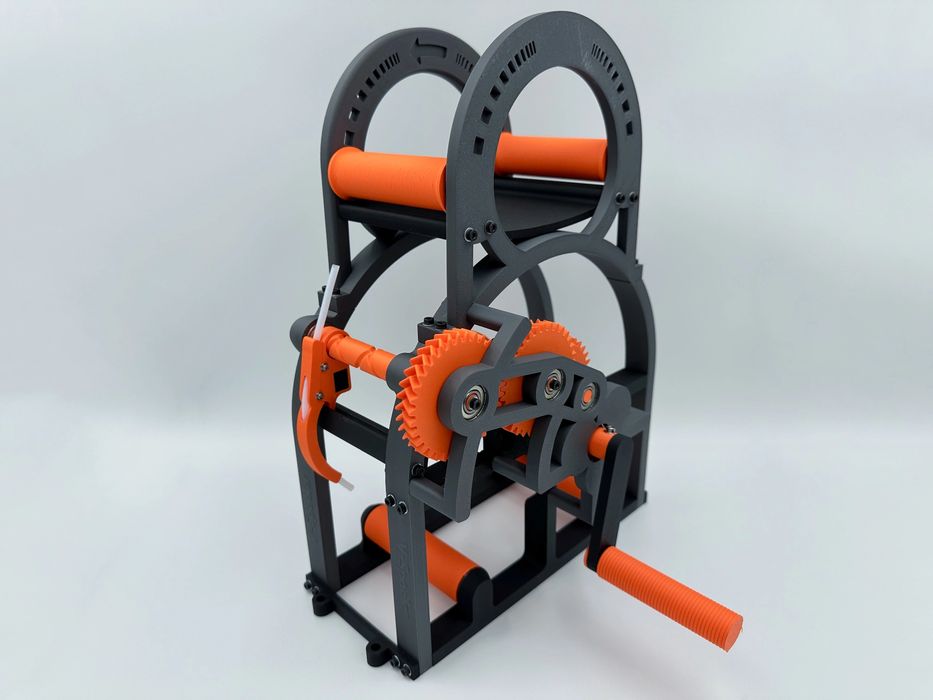
This week’s selection is the V-Spooler by MakerWorld contributor Fyrby Additive.
The V-Spooler is a 3D printable device to move filament from one spool to another. If you’ve ever had to do this by hand, it is definitely not a fun task.
Why move filament? In the old days it was often done because a spool might have been damaged, requiring a new spool. Nowadays there are several reasons for doing so.
One is the emergence of “refill” filament products. These are simply coils of filament that come without a spool. They’re available at lower cost, but in order to use them they must be put on a spool.
Another reason is the increasing use of automated filament switching devices, such as Bambu Lab’s AMS or Anycubic’s new Color Engine Pro. These are accessories that hold typically four spools in a chamber, and move them in and out of the hot end as required during printing. This enables multicolor 3D prints.
However, these accessories typically have some constraints on the size and nature of the spools. They have to fit, and they have to roll. Because of this many people end up respooling their inexpensive filament onto spools that fit the accessory.
There are plenty of 3D printable re-spooling devices available to the public, ranging from simple hubs to more complex concepts. The V-Spooler is perhaps the most complex and interesting I’ve seen so far.
The V-Spooler takes two spools, one full at the top, and one empty at the bottom. Power is provided by a common variable speed hand drill, which attaches to the lower spool’s hub.
As power is applied, the gears of the system turn the spools and filament moves to the lower spool. Interestingly, there’s a component that slides back and forth to ensure the filament lands in an equal pattern on the spool. This is something that isn’t usually done by other spooling devices.
There are a considerable number of parts to 3D print, and the plates provided require a reasonably-sized build area: you cannot, for example, print them on a Bambu Lab A1 Mini, it’s too small. However, Fyrby Additive does provide an alternate “mini” version of the V-Spooler.
Once the parts are printed, there’s quite a bit of assembly and a lot of additional hardware required. For example, you’ll need 20 (!) 608 bearings, 52 bolts and washers, along with some PTFE tubing.
There are lengthy assembly instructions provided in the MakerWorld entry, which should make it relatively painless to put together.
Once done you’ll have a powerful and easy-to-use filament re-spooler that doesn’t take up much desk space.
Is it worth all this printing and assembly? I think it could be, because it allows you to easily switch from regular spools to refills, and the cost savings alone should be quite beneficial.
Via MakerWorld
